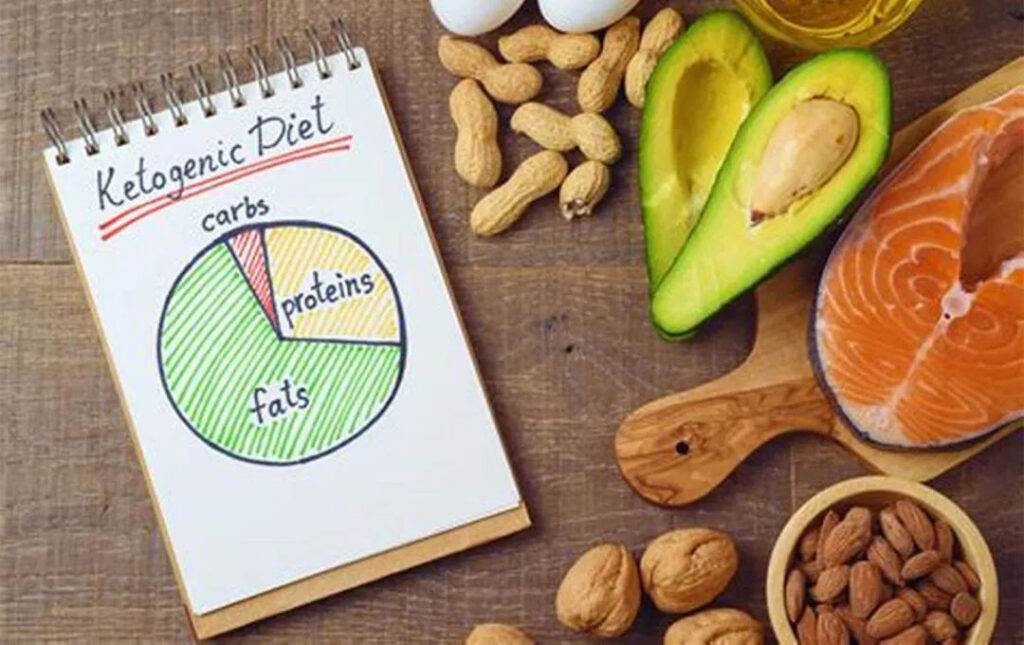If you have heard of the keto diet, you should be more or less familiar with ketone bodies. So what exactly is a ketone body? How is it produced?
Everyone has ketone bodies in their bodies
Whether you are on a ketogenic diet, a low-carb diet, a high-carb diet, a vegan diet, or intermittent fasting…, ketone bodies are present in everyone. Ketone bodies are specific intermediates produced by the normal catabolism of fatty acids in the liver and consist mainly of:
- Acetoacetic acid: detectable in urine
- β-hydroxybutyric acid: present in large amounts in the blood
- Small amounts of acetone: excreted from breath, sweat, and urine
How are ketone bodies produced?
In a normal diet or a diet high in carbohydrates, the body uses glucose as the main source of energy for the body.
However, when the diet is very low in carbohydrates (the main source of blood sugar) and moderate amounts of protein (too much protein is converted to blood sugar), and fat is used as the main source of energy, ketone bodies are produced.
In this case, the fat cannot enter the cells directly but is first broken down by the liver into smaller molecules of ketone bodies, which then enter the bloodstream and act like glucose as a source of energy for the body. This is the same reason why the body cannot use starch directly as fuel, it has to be broken down into glucose first.
Since the brain cannot use fat directly as a source of energy, ketone bodies can cross the blood-brain barrier to be used by the brain for the purpose of treating brain disorders.
This state of ketone body production is called “ketosis”
Ketosis is a metabolic state in which the body converts moderate amounts of fat into ketone bodies that are then released into the bloodstream in response to extreme hunger or minimal carbohydrate intake by the liver.
The body is considered to be in ketosis when it produces enough ketone bodies to detect significant levels in the blood (usually above 0.5 mM). The quickest way to enter ketosis is through fasting, but this is not a permanently viable method.
The most viable method is to use a ketogenic diet, which puts the body into a “nutritional ketogenic state” for the purpose of disease treatment or weight loss.

How can I get my body to produce ketone bodies faster?
The speed of entering the ketogenic state can vary from person to person
The fastest can be the next day, can be described as ketogenic wizards, the slowest I have heard repeatedly for several months hovering between low carbon and ketogenic and violent carbon.
The following 3 foods are recommended to get into ketosis quickly:
1. Cold-pressed coconut oil or medium-chain triglycerides isolated from coconut
Essential gas pedals in the early stages of ketogenesis. This is because they can directly help accelerate the body’s conversion to ketone-burning mode and are the least likely to be converted into body fat-hoarding fats in the body. And they also have the added benefit of helping you combat fatigue and reduce inflammation in your body during the early stages of ketogenesis.
2. Vegetable Juice
Vegetable juice can replenish the potassium ions that will be suddenly lacking at the beginning, and it can promote the discharge of toxins produced during the conversion from sugar burning to ketones in the blood, you can juice with whatever vegetables you like, as long as they are low-carbon vegetables, do not add any fruit, and add a drop of stevia liquid if you can’t stand the taste.
3. Salmon
It is recommended to eat more salmon in the first few days, first of all, it provides a good ratio of fats, while you eat the right amount of protein and at the same time GET a satisfying fat ~~ efficient – but the most crucial thing is that it contains sufficient omega-3 ~. Do you know how important omega-3 is in the early stages of ketogenesis, it is a great protector of your hormone thyroid! And women who have a higher intake of omega-3 unsaturated fatty acids in their diet also have a more diverse gut flora. And the degree of diversity of the human flora is directly proportional to the level of health. Higher flora diversity reduces the incidence of diabetes, obesity, and inflammatory bowel disease, so again, it can solve the constipation problem in the early stages of ketogenesis.




